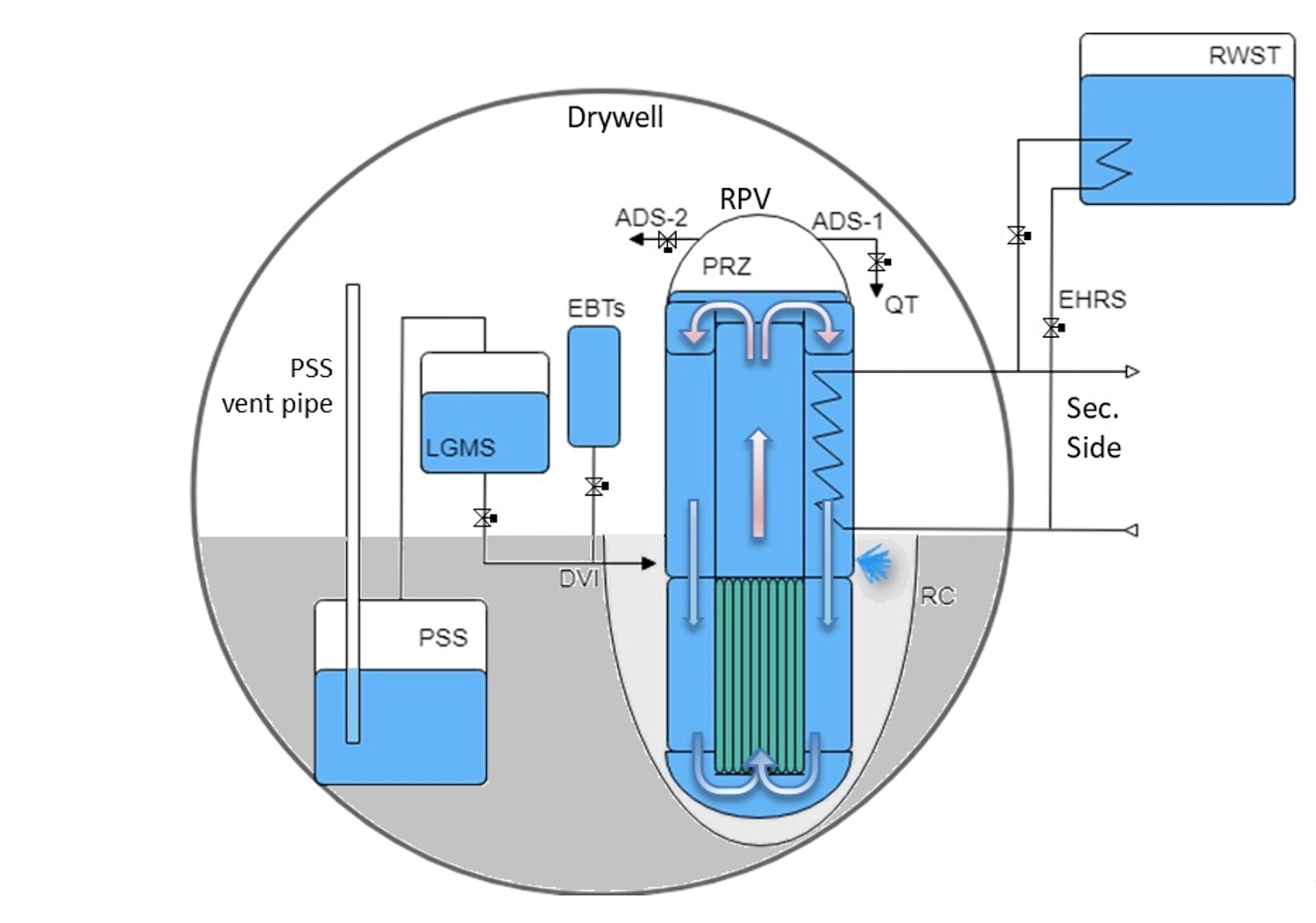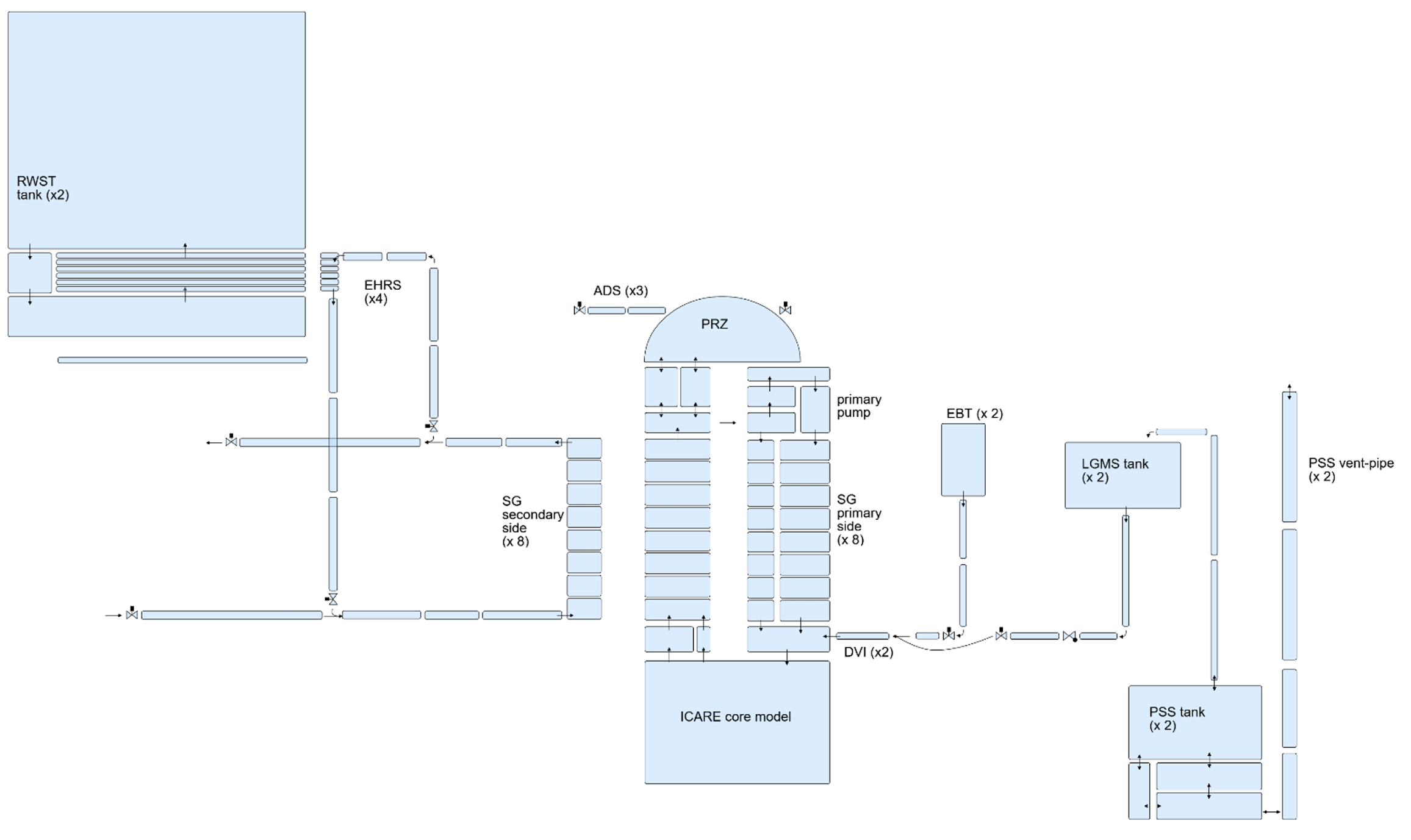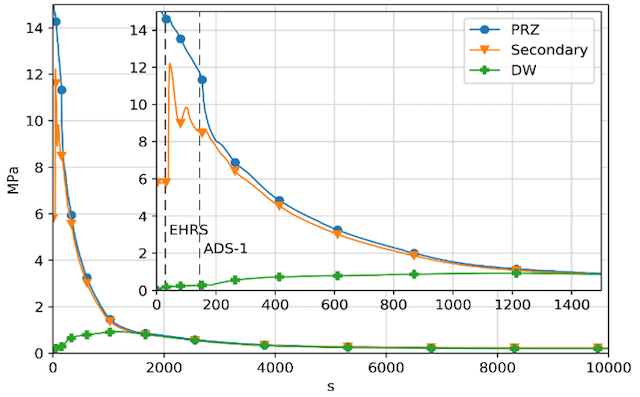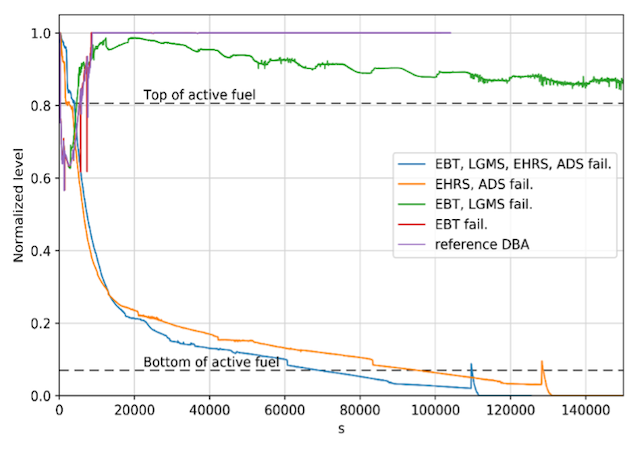Analyses of the capability of ASTEC code to simulate SMR phenomena in DBA and BDBA scenarios

Today, light water Small Modular Reactors (SMRs) are one of the key design options for the near-term deployment of nuclear reactor technology due to their general recognized advantages (inherent safety, design simplicity, possibility of simplified parallel construction, etc) and to their level of technological & licensing readiness. Considering this, in the last years in the European area, it is growing the technological interest towards light water SMRs, due to their possible near-term deployment also in Europe. In this framework, TSOs are going to support Safety Authorities in the envisaged safety review process, including Severe Accidents (SA) analyses, of those SMR concepts that are almost ready to be licensed in Europe.
In the view of the envisaged European safety review process, ENEA, in collaboration with Alma Mater Studiorum Università di Bologna, started the analysis of the capability of the ASTEC code (study carried out with ASTEC V2, IRSN all rights reserved, [2019]) to simulate the main phenomena/processes taking place in a SMR in DBA and in postulated BDBA scenarios. The activity is developed in the NUGENIA TA2 ASCOM (ASTEC COMMunity) collaborative project, launched and coordinated by IRSN, and the SMR design considered for the analyses is a generic International Reactor Innovative and Secure (IRIS) design. IRIS is an integral, modular, medium power (300 MWe) PWR, developed by an international consortium led by Westinghouse and involving several organizations from different countries. This well-known reactor concept has been selected because, in a generic representation, includes the main SMR design features (integral configuration, implementation of several passive systems, RPV/containment natural circulation coupling, etc) of current interest and considered in the near-term deployment SMRs. This allows a wider assessment of the ASTEC code predicting capability against SMR phenomena/processes. Figure 1 shows a simplified safety systems scheme for the generic IRIS design considered for the analyses.
In the first phase of the activity, the main objective was to analyse the capability of the ASTEC code to simulate the phenomena taking place along a Design Basis Accident (DBA) sequence. The DBA considered is a guillotine break of one of the 2 Direct Vessel Injection (DVI) lines, assuming the operation of all the passive safety systems of the reactor. Analysing the simulation results of the DBA transient it can be concluded that, with the adopted nodalization scheme, the code is qualitatively able to predict the expected main thermal–hydraulic phenomena driving the accident sequence. In particular, the code is able to simulate the thermal–hydraulic coupling between the containment and the RPV, and the passive safety systems operation. This allows the prediction of the success of the passive mitigation strategy leading to the RPV depressurization and core cooling in safety conditions. Figure 2 shows the CESAR nodalization of the generic IRIS design. Figure 3 shows the pressure evolution in the pressurizer, secondary system and drywell, calculated by the ASTEC code. Figure 4 shows the normalized value of the average collapsed level in the core along the DBA case, calculated by ASTEC.
In the second phase of the study, the capability of the code to simulate postulated Beyond Design Basis Accident (BDBA) scenarios, including SA, has been investigated. In particular, different BDBA scenarios, obtained by assuming the unavailability of selected passive safety systems, have been postulated. These analyses showed the capability of ASTEC to simulate the effect of the not operation of passive systems and the capability to simulate the degradation phenomena in integral type configurations. Figure 4 shows the normalized value of the average collapsed level in the core for the BDBA calculations, considering the different intervention of the passive systems. From Figure 4 it is possible to identify the sequences that determine the uncovery of the core and the consequent SA. These BDBA calculations show the possibility to simulate a wide range of scenarios obtained by the assumptions made on the not operation of the selected passive safety systems. The analyses conducted are also helpful to provide more information regarding the role played in the mitigation strategy success or failure by each passive safety system and the related thermal–hydraulic phenomena. The activity is currently in progress.
Fulvio Mascari
ENEA
fulvio.mascari@enea.it


